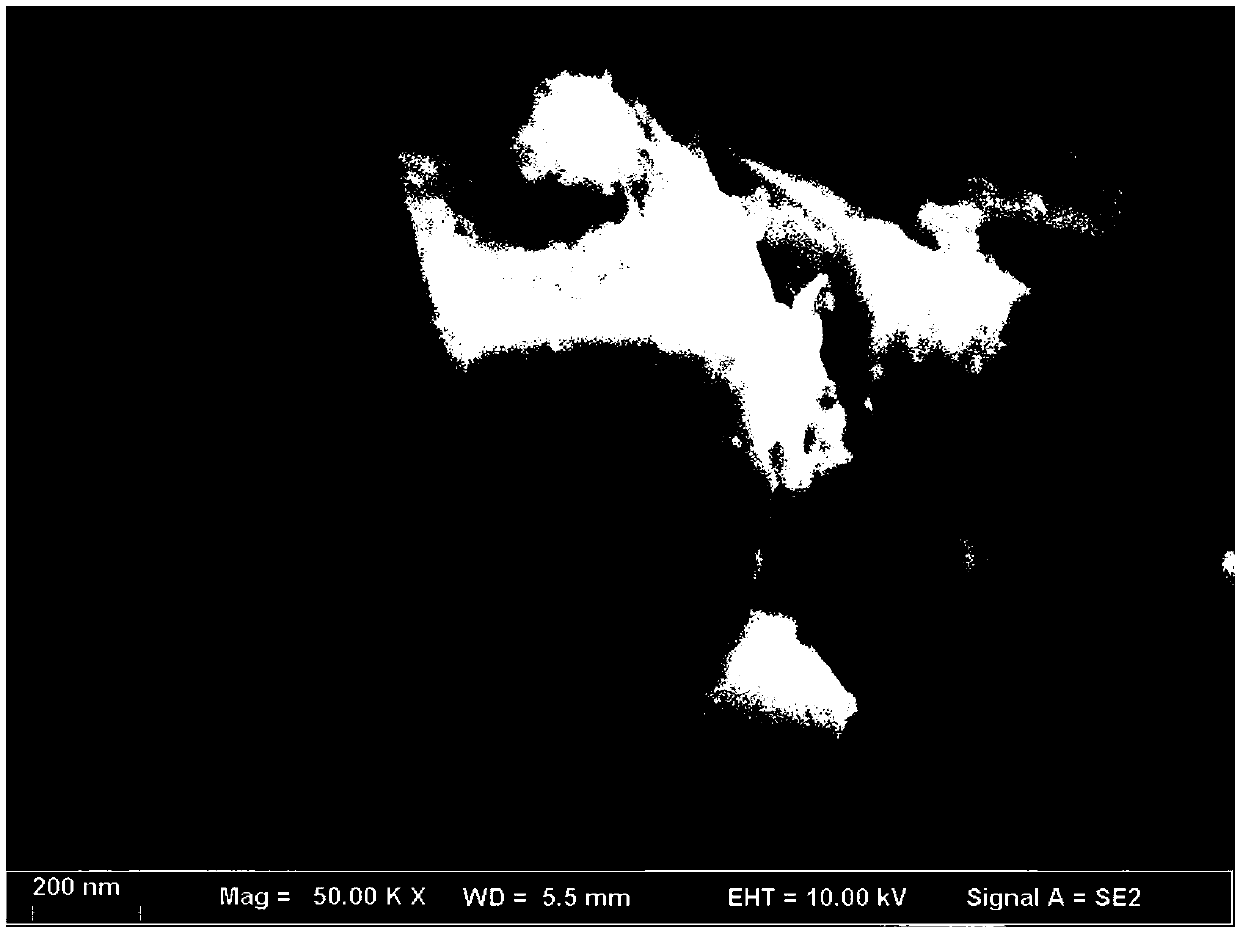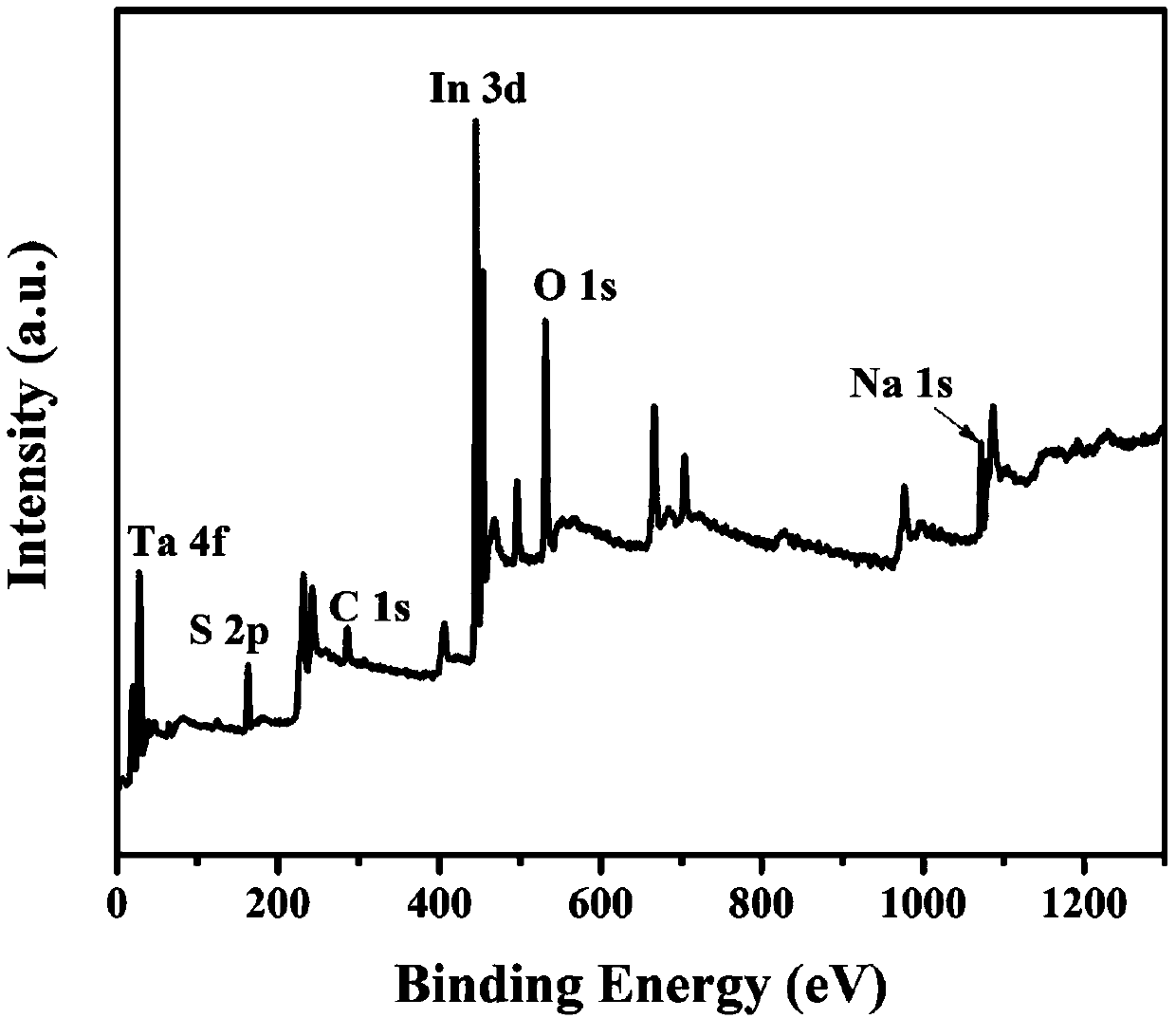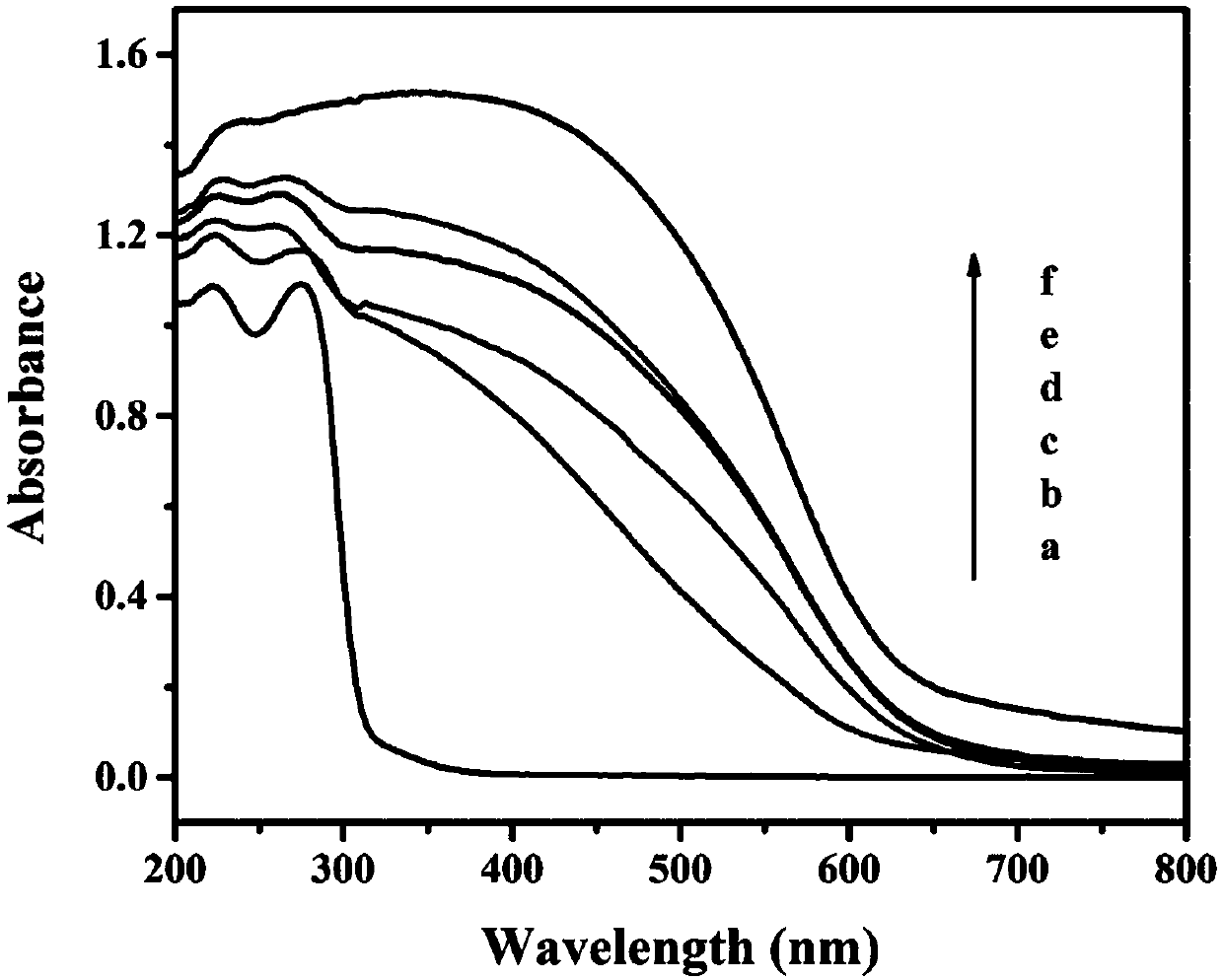Preparation method of in2s3/natao3 composite nano photocatalyst
A nano-photocatalyst and catalyst technology, applied in the direction of physical/chemical process catalysts, chemical instruments and methods, chemical/physical processes, etc., can solve problems such as composite materials that have not yet been discovered
- Summary
- Abstract
- Description
- Claims
- Application Information
AI Technical Summary
Problems solved by technology
Method used
Image
Examples
Embodiment 1
[0016] Example 1 In 2 S 3 / NaTaO 3 Preparation of Composite Nanophotocatalyst
[0017] (1) Weigh 0.221g Ta respectively 2 o5 and 0.6g NaOH were added to a 50mL reaction kettle, 30mL deionized water was added, the solution was stirred for 10min to mix well, and then the obtained solution was transferred to a polytetrafluoroethylene-lined reaction kettle, and kept at 140°C for 12h , and then after natural cooling, the cubic NaTaO 3 .
[0018] (2) Weigh 0.2g NaTaO 3 , and then weigh a certain amount of In(NO 3 ) 3 ·5H 2 O was placed in a beaker, and 30 mL of deionized water was added, and stirred for 1 h; then a certain amount of thioacetamide was added to the above solution, and the stirring was continued for 1 h, and the resulting suspension was transferred to a polytetrafluoroethylene-lined reaction kettle, and stirred at 180 ℃ for 12 hours, naturally cooled, washed and dried to obtain the product.
Embodiment 2
[0019] Example 2 In 2 S 3 / NaTaO 3 Characterization of Composite Nanophotocatalysts
[0020] like figure 1 Shown, In 2 S 3 / NaTaO 3 It can be seen from the field emission scanning electron microscope of the composite nanophotocatalyst that In 2 S 3 Nanoparticles are well compounded to NaTaO 3 Cubic surface, NaTaO 3 The cube size is 200-300nm.
[0021] like figure 2 As shown in the XPS figure, it can be seen that there are elements of S, In, O, Ta, and Na.
[0022] like image 3 Shown, In 2 S 3 / NaTaO 3 It can be seen from the solid ultraviolet absorption spectrum of the composite nanophotocatalyst that pure NaTaO 3 There is a strong response in the ultraviolet region, and there is basically no absorption in the visible region. 2 S 3 After compounding, it has a strong response in the visible spectral range, and with the In 2 S 3 As the content increases, the absorption gradually increases.
Embodiment 3
[0023] Example 3 Different contents of In 2 S 3 / NaTaO 3 Visible light catalytic activity experiments of composite photocatalysts
[0024] (1) Prepare a tetracycline solution with a concentration of 100mg / L, and place the prepared solution in a dark place.
[0025] (2) Weigh different contents of In 2 S 3 / NaTaO 3 Put 50mg of composite photocatalyst on the surface into the photocatalytic reactor respectively, add 100mL of the target degradation solution prepared in step (1), and stir magnetically for 60min. Catalytic degradation experiments.
[0026] (3) Draw 5 mL of the photocatalytic degradation solution in the reactor every 30 minutes, and measure its UV-visible absorbance after centrifuging to remove the catalyst.
[0027] (4) by Figure 4 It can be seen that the prepared nanocomposite photocatalysts have excellent visible light catalytic activity, especially In 2 S 3 The sample with 20% content showed the best degradation activity, compared with pure In 2 S 3 ...
PUM
| Property | Measurement | Unit |
|---|---|---|
| size | aaaaa | aaaaa |
| size | aaaaa | aaaaa |
Abstract
Description
Claims
Application Information
 Login to View More
Login to View More - R&D
- Intellectual Property
- Life Sciences
- Materials
- Tech Scout
- Unparalleled Data Quality
- Higher Quality Content
- 60% Fewer Hallucinations
Browse by: Latest US Patents, China's latest patents, Technical Efficacy Thesaurus, Application Domain, Technology Topic, Popular Technical Reports.
© 2025 PatSnap. All rights reserved.Legal|Privacy policy|Modern Slavery Act Transparency Statement|Sitemap|About US| Contact US: help@patsnap.com



